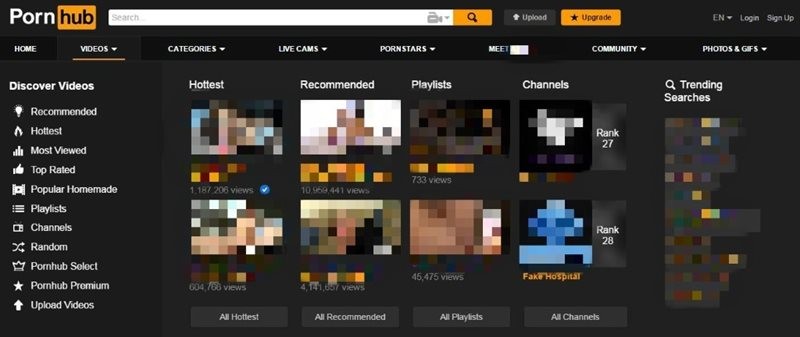Porn usage is spiking during the Coronavirus crisis — here’s why that’s a big problem and what we can do about it
 I’m saddened — but not surprised — to hear that traffic to porn sites is spiking during this time of physical isolation. It means that not only are we more socially isolated than we were before, but far too many of us — especially men — are turning more than ever to dangerous content portraying and celebrating the objectification of women and normalizing violence against women and girls.
I’m saddened — but not surprised — to hear that traffic to porn sites is spiking during this time of physical isolation. It means that not only are we more socially isolated than we were before, but far too many of us — especially men — are turning more than ever to dangerous content portraying and celebrating the objectification of women and normalizing violence against women and girls.
Today’s mainstream pornography – which is free and available at the click of a mouse – reinforces the most damaging elements of male socialization: that women are objects, they’re the property of men, and that they have less value than men. Today’s mainstream pornography normalizes violence against women and girls and shows a version of sex that has nothing to do with connection or intimacy. Male dominance and pursuing women solely for sexual conquest – both of which are harmful teachings of the Man Box – are recurring themes.
Kids are also seeing this destructive content younger than ever. A colleague shared with me recently that her 10-year-old son was shown Pornhub. That day, her son became a statistic. The average American boy sees Internet porn for the first time at age 10. With increased time on screens during this pandemic, this destructive force has crept even closer.
We want to help families better understand these issues. Here are three actions you can start today:
First: Talk to your kids about porn. Here’s what scares me most: 44 percent of boys ages 11-16 who looked at porn reported that online porn gave them ideas about the type of sex they wanted to try. It’s disturbing because 88 percent of downloaded porn contains violence against women.
We have to get over our cringy-ness and have these conversations. We have to ask what they are seeing, where they are seeing it, and explain what the images are really teaching them. We have to explain how real sex is different from sex in porn. And we have to talk about consent.
Second: Think critically about your own consumption of porn, how it has played a part in how you’ve been socialized to view men, women, and girls, and how it impacts your actions. Does it have a positive or negative impact? Does it make you happy? Or does it ultimately make you feel disconnected, lonely and in perpetual state of trying to measure up? Research shows there is a strong correlation between regular porn consumption and poor body image and high relationship anxiety.
Male socialization is deeply rooted in silence. It makes us feel like we can’t talk about how we are feeling, when we need connection, and as a result, we often seek out connection in ways that ultimately don’t meet our needs and that devalue and harm others.
Third: Join us in practicing and promoting healthy manhood. The practice of healthy manhood relieves men and boys of a lifetime of trying to measure up, of trying to be man enough, of endless performance, pursuit of conquest, and constant suppression of emotion — all at the expense of women, girls, LGBQ, trans, and gender non-conforming people — as well as themselves.
We recently launched a #HealthyManhood Facebook Group to facilitate conversations about topics like this – we’d love to have you join. If you’d like to reflect more on these topics, I’d encourage you to watch the video from our April 2020 Community Conversation discussing the impact of porn with Fight the New Drug.
I’m asking you to take a minute today to think about what healthy manhood means to you and to make a commitment to practice it in your life and model it for the young men in your life. Thank you for joining me in this effort.
This post was initially published on Linkedin.